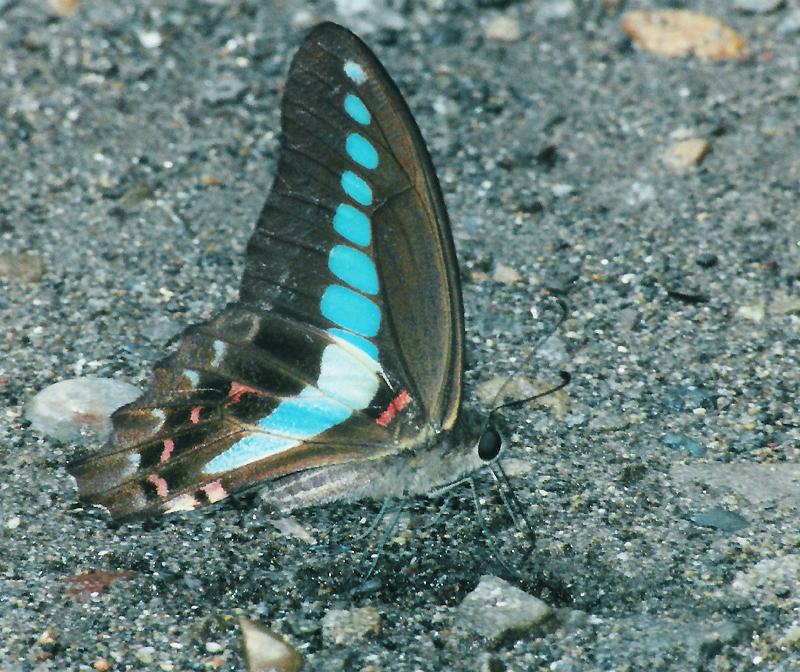Butterflies of Japan
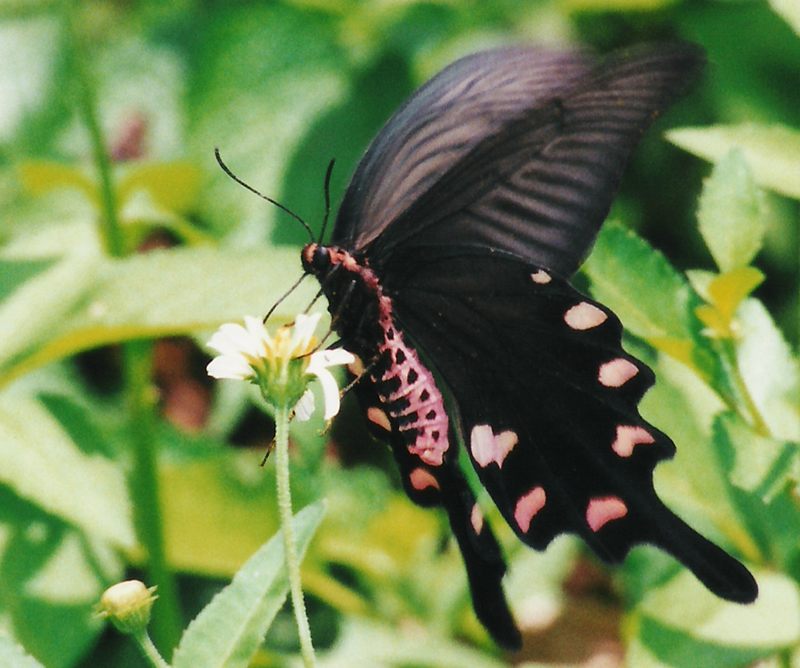
This swallowtail butterfly goes by the latin name Byasa alcinous. It's one of the five symbols of the city of Himeji, which is famous for its castle. I don't remember seeing any of these butterflies in Himeji itself, but there were quite a number in the Imperial Palace gardens in Tokyo. |

I can't remember where I saw this butterfly, I don't know why it's bending its body in this way, and I haven't been able to track down what its name is. |
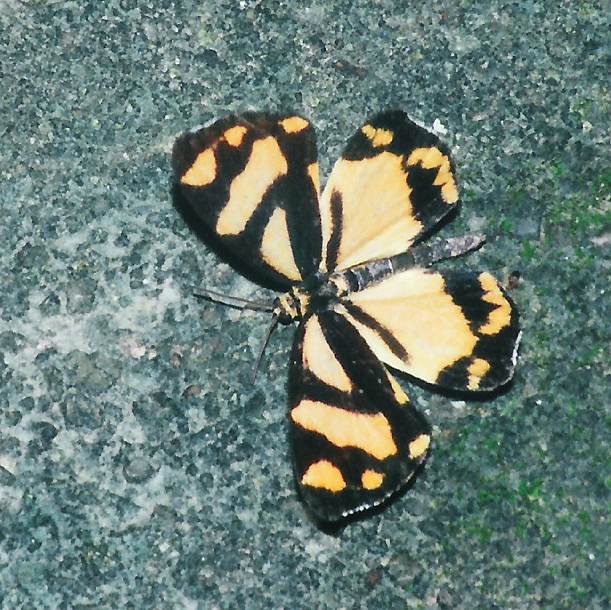
Is there anything else you'd like to know about it? |

This butterfly belongs to a family of butterflies called skippers, which are somewhere in-between moths and regular butterflies. There are many, many different varieties of skipper, and it's often very difficult to distinguish one species from another, in part because most of them are either dull orange-yellow or even duller brown. Some of them, however, break the mould by having iridescent colors, like this one. I also have a wallpaper-size photo of an iridescent skipper which I photographed in Costa Rica. This individual was perched on a pot plant in an open-air store near Mt Fuji. |
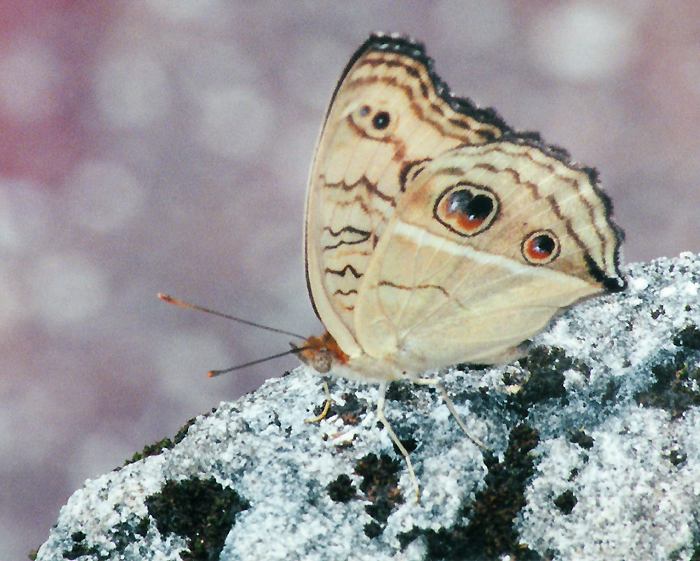
This is a Peacock Pansy, which is quite common throughout Asia. Like other pansy butterflies, they can be quite territorial, defending their space against intruders. |
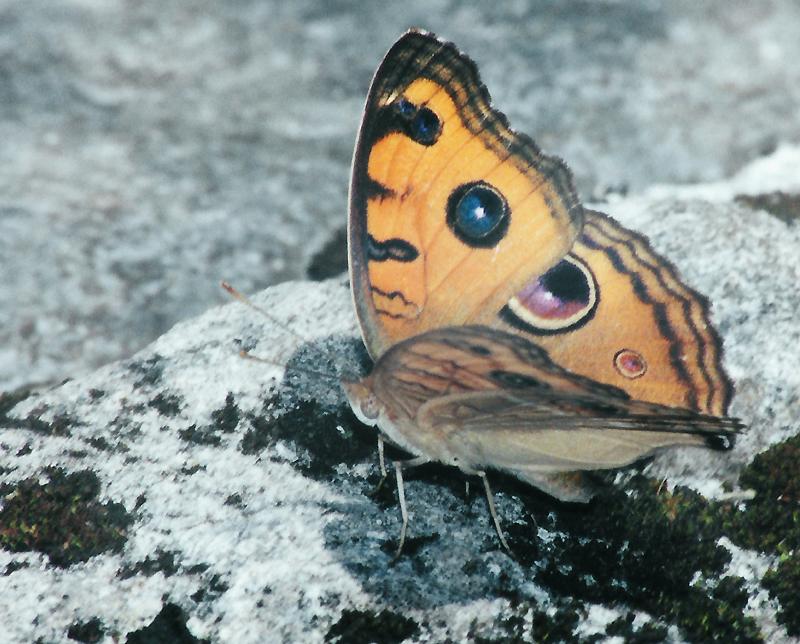
Its latin name is Precis almana, but it was previously called Junonia almana. A similar fate befell the common buckeye butterfly, which is an American butterfly with the same large eyespots and similar looking squiggles at the front of its wings - the buckeye changed from Precis coenia to Junonia coenia. The eyespots are thought to frighten birds and other predators long enough for the butterfly to make its escape. |
